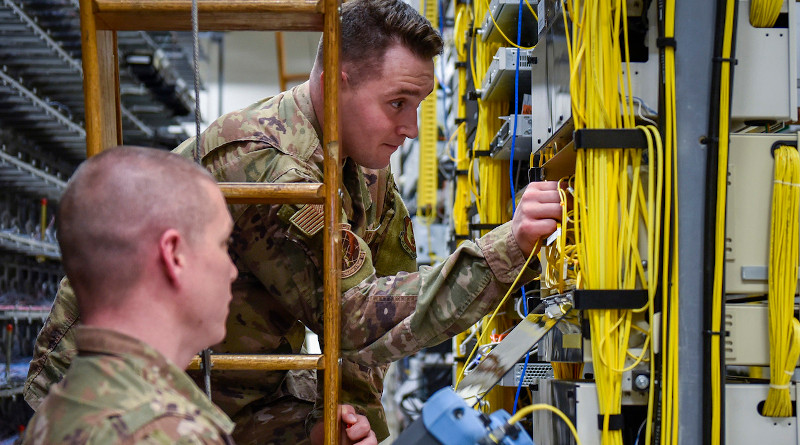Pentagon: 5G To Aid Warfighters, Thwart Adversaries
By DoD News
By David Vergun
The Defense Department is preparing to use 5G in its networks and prevent adversaries from hacking into it, a DOD official said.
Dr. Michael D. Griffin, undersecretary of Defense for Research and Engineering, spoke at the 11th annual McAleese Defense Programs Conference in Washington, D.C.
Regarding 5G, the department has put $484 million in its fiscal year 2021 budget request, he said.
The DOD isn’t trying to develop 5G on its own, he clarified. “What we’re trying to do with 5G is help keep DOD up to where the commercial telecom providers are eventually going to go.”
The entire DOD budget is just a sliver of the many trillions of dollars being invested by the telecommunications industry worldwide and the department can’t possibly develop it on its own, he added.
The department wants to determine how 5G can be used for military advantage once it becomes available and how to protect that network from adversaries seeking to compromise it, he said.
“We cannot allow adversaries to have network superiority at the same time that we intend to use these networks to our advantage,” he said.
Some of that funding will go to setting up 5G utilization experiments at Nellis Air Force Base, Nevada, plus four other geographically dispersed DOD bases, he said.
There’s a need to understand how military training, logistics, warehouses, ports, depots and airfields will function in a future 5G environment, he said.
Griffin described some of the 5G challenges.
The military can’t bring its networks and spectrum allocation overseas when it deploys, he said. The military will have to use networks that are there and the assigned spectrums of those networks, which might differ from those in the U.S. “It’s a really challenging problem.”
The future is in 5G spectrum sharing, he said, noting that “DOD is constantly under pressure to make sure we’re not claiming a larger share of the spectrum than we actually have to have.
“In the future, there will be more operators rather than fewer so we’re going to have to figure out spectrum sharing,” he continued.
Operators will also need to figure out how to effectively do anti-jamming, he added.
Griffin concluded: “We need to make sure that we are in the lead in 5G and next G,” he said, meaning there will eventually be a 6G, a 7G and an 8G.

